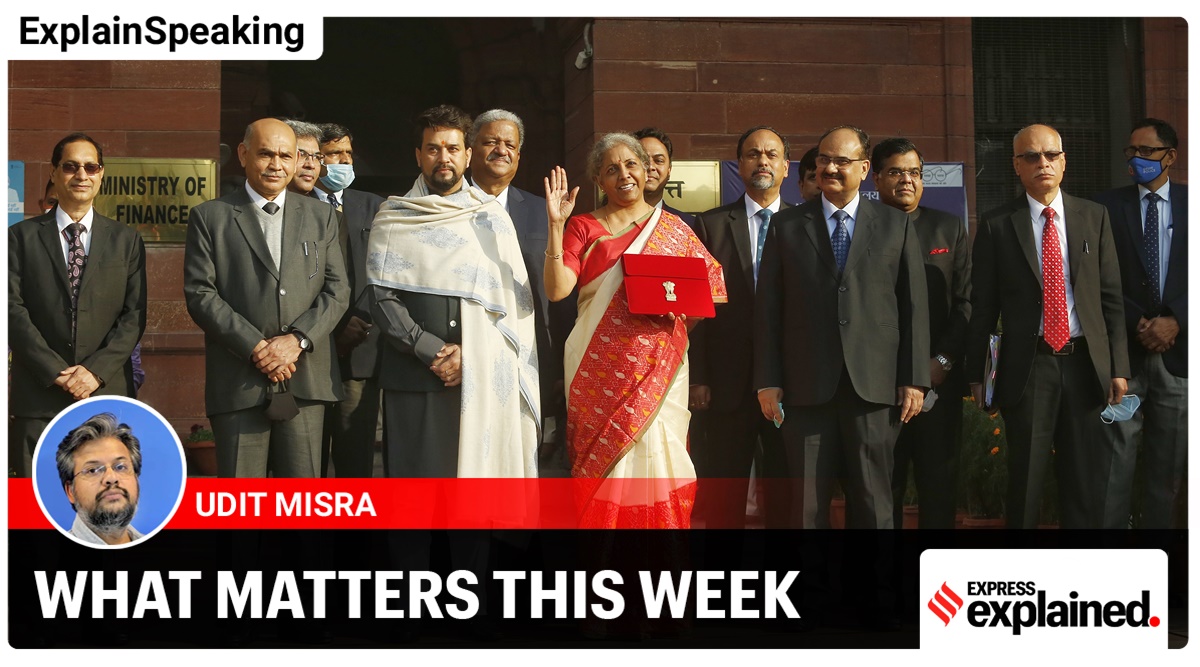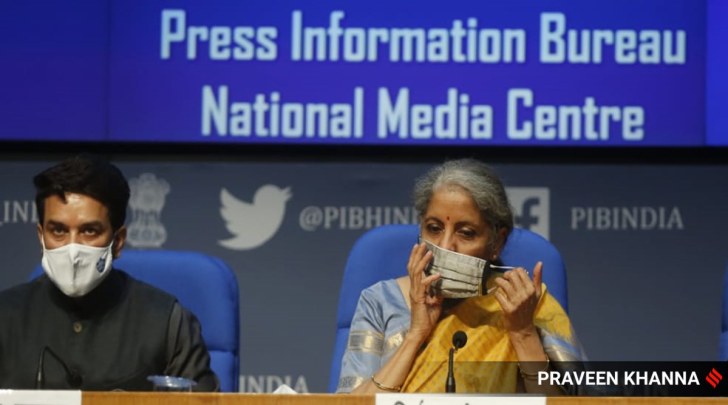
Dear Readers,
Union Finance Minister Nirmala Sitharaman presented her third Budget on Monday. Everyone had great expectations from it. India is after all now the fifth-largest economy and this Budget was supposed to be the formal policy response to Covid — the once-in-a-century pandemic.
Going into the Budget, India had several crying demands — high and rising unemployment, low and falling labour force participation rate, embarrassingly high, and rising, levels of child malnutrition, widening gender gap, abysmal standards of education and skills training, rising poverty, skyrocketing inequalities, and a hollowed out system of public healthcare. That is not to mention a siege of the national capital by farmers over that past four-five months.
It is natural that many Indians thought the Budget would ramp up allocations across the board — that the FM will simply double and treble allocations and try to solve all problems.
In reality, the exact opposite happened.
The FM revealed that what had trebled over the past year was the fiscal deficit. That is the gap between what the government gets in revenues from taxpayers and what it needs to spend on taxpayers. In other words, it represents the level of borrowings by the Centre.
To be sure, it had trebled not just because of Covid but also because the FM decided to come clean on the under-reporting of the fiscal deficit she indulged in the past. Considering the government finances were getting bent out of shape anyway due to Covid, the FM decided to bung in those liabilities that were never reported in the past — the so-called off-budget borrowings.
Following up on this rather remarkable and praiseworthy decision to be transparent about the government’s true level of liabilities, the FM then proceeded to construct a Budget that, instead of trying to win over political foes and influence marginal voters, tried to stay as true to the ideological beliefs of the ruling Bharatiya Janata Party.

People watching Budget announcements in Kolkata
The truth is that Prime Minister Narendra Modi came to power on the promise of Minimum Government, Maximum Governance. It meant a lot of things. But primarily it pointed to the rather common-sensical conservative notion that a government should not try to be the dominant player in every part of the economy and that it should retreat from those sections of the economy where the private sector would be more efficient. For instance, banking or insurance.
The phrase also meant that governments should not run massive budget deficits. Instead, the idea was to have a government that enjoyed living within its means — that is, doing only as much as its revenues from taxpayers would allow it to do.
It can be argued that since 2014, regardless of what he said or didn’t, PM Modi’s finance ministers essentially approached the Union budget-making like any left-of-Centre government before. As such, you heard about wanting to provide everyone with one set of entitlement or the other.
This included things like talking about a bank account as some sort of basic human right. Yes, having a bank account is desirable and quite useful, but characterising it as “Jan Dhan” was pretty out of character for the promises that PM Modi represented when he first came to power.
The same holds true for the idea of doubling farmers' income. Regardless of the electoral promise, it was impractical for a conservative government to work towards artificially providing double the income to 45% of Indians involved in agriculture, which, incidentally, accounts for just 15% of India’s GDP.

Sitharaman and Anurag Thakur addressing the media after the Budget presentation
Ditto for other Budget allocations like the ones for food and fertiliser subsidies and the running of the Food Corporation of India and the Public Distribution System etc.
No government could hope to achieve such goals and yet be fiscally responsible -- at least not without a fast-growing economy where tax revenues allow you to be liberal and progressive.
On the face of it, past Budgets under PM Modi attempted to balance the agenda both on the left and the right of the public debate. On the economy, the focus was more left-of-Centre and in politics and social spheres, the agenda was more right-of-Centre.
This is the first time the agenda has attempted to become right-of-Centre on the economy as well. Covid has wrecked the government’s finances and there is no place to hide. The government was forced to prioritise. In response, it has chosen to stand by what it believes.
As such, instead of massively ramping up allocations for sectors such as health (it has fallen by almost 10%) and education (increased by almost 10%), it has signaled that public sector banks and insurance companies (just one for now) will be sold off. In the past, governments would have worried about what the trade unions and workers would say and how it might affect a government’s electoral prospects.
But, as the reaction to the farmers protests bears out (Budget allocation to agriculture, too, has fallen), this government is confident about its support base and the reasons why it gets voted back into power in the Centre as well as in the states.
Presumably, the not-so-silent majority wants market reforms across the board. Instead of doles and handouts, there is perhaps a growing base of people who genuinely believe that the government should reduce its imprint on the economy. In this worldview, high unemployment will go away in time as the businesses make enough profits to recover and reinvest and as households regain confidence to spend again. Till then, instead of splurging money on wasteful subsidies and schemes that try to inefficiently provide health and education, the government should attempt to just make it easier to do business.
If this approach sounds alien to you then you’d understand why this is such a bold Budget.
Take care!

No comments:
Post a Comment